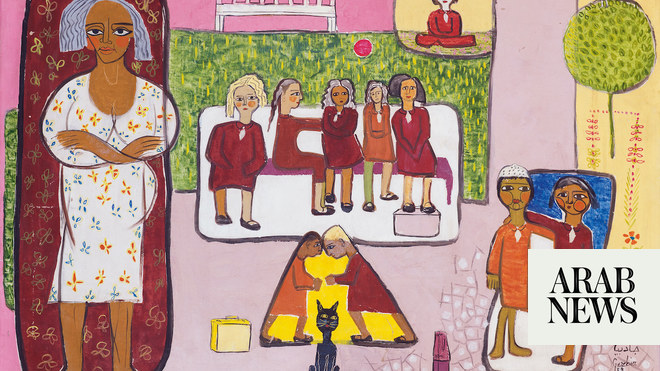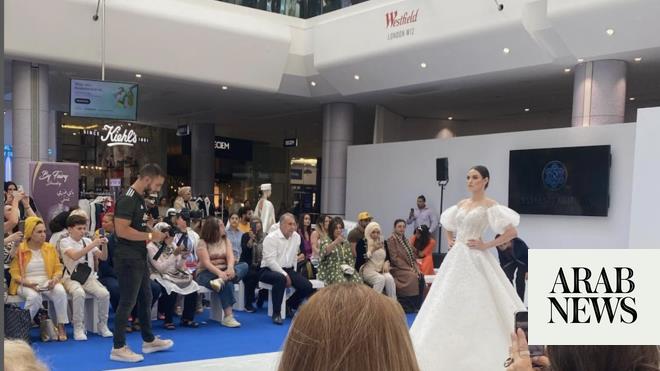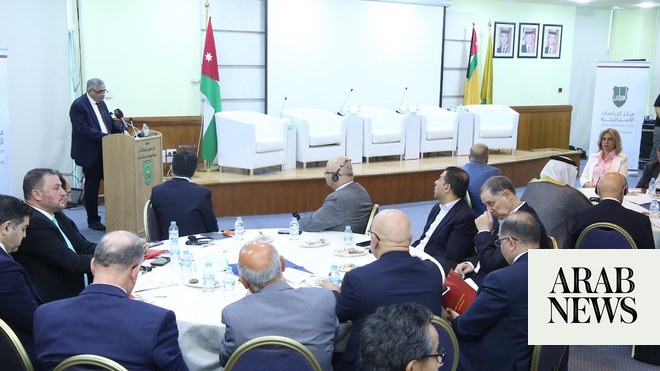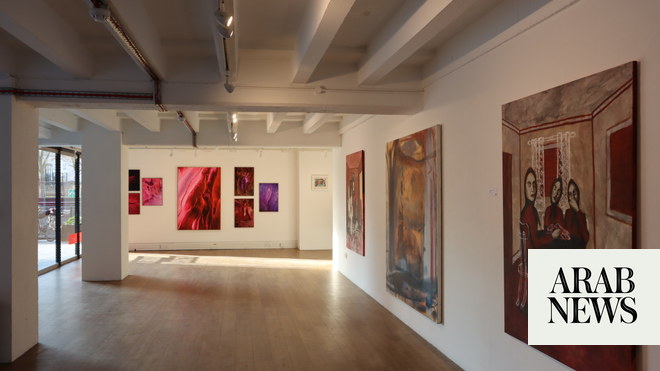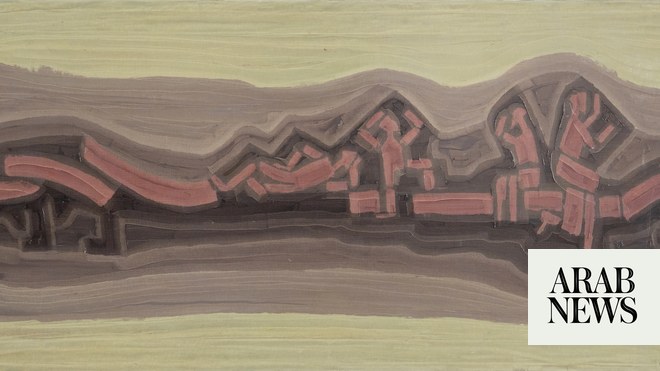
Highlights from Sotheby’s ‘20th Century Art / Middle East’ auction, which closes Oct. 25
For the latest updates, follow us on Instagram @arabnews.lifestyle
Etel Adnan
‘California’
With an estimated value of up to £150,000 ($170,000) this piece from the revered late Lebanese painter is one of the highlights of the auction. This particular work, Sotheby’s says in the auction notes, “captures the exquisiteness of Adnan’s cubist abstraction in a composition recalling the cityscape of a place that she once called home … In fact, one may recognize … the well-known skyline of San Francisco.” It is an excellent example of both Adnan’s passionate painting style — thick textures and bold colors — and of her ability to represent emotions on canvas. It also shows how Adnan liked to leave her works open to interpretation. “Abstract art was the equivalent of poetic expression; I didn’t need to use words, but colors and lines,” Adnan wrote in 1996. She is quoted in the auction notes as also saying: “Art is also a kind of language — but it’s a language of feeling. When I paint, I am happy. I am both an optimistic, happy person, and caught in and aware of tragedy. Although I lived in California most of my life, I never had a time where I could forget the problems of the Middle East. Every morning the newspaper would remind me.”
Aref Al-Rayess
‘Untitled (The Desert)’
This is a work from the Lebanese artist’s series of paintings of the Saudi Arabian desert, which he created while based in Jeddah in the 1980s, having relocated to the Kingdom because of the Lebanese Civil War at the invitation of then-mayor of Jeddah, Dr. Mohammed Said Farsi. “While living in Jeddah, the artist was set the task of sculpting seven works in stone and aluminum to be installed in the city’s open-air museum. These sculptures provided a new platform for abstraction in his art; henceforth, the success of their form led to another five works being placed in the city of Tabuk,” the auction notes explain. “The marble and stone used for these commissions were sourced by the artist during multiple excursions across Saudi Arabia. These excursions exposed El-Rayess to the tranquility and spirituality of the Arabian desert … and provided an escape from the distress and corruption of his homeland. He was particularly inspired by the sanctity of light, its beauty and mysticism, which he sought to reproduce in his art.”
Ziad Antar
‘Mecca’
This image of Makkah is part of the Lebanese filmmaker and photographer’s “Expired” series, which was shot with an old camera (a 1948 Kodak) using black-and-white film that was made in 1973 and officially expired in 1976. “It is the ruinous condition of the films that interested me as a medium for my work. As a result, the images are sometimes void of pigment, often damaged, blackened or blurred,” Antar explained to Edge of Arabia. “The outcome was always unpredictable and uncertain. The whole experiment lies in the idea that even I did not know the result before the images were printed. Today when we try to develop the technology that surrounds taking an image, what we are trying to make is a good image, an image that translates the reality of what we see before us. But in my artistic practice, I do not care about translating the same image that I am seeing.”
Jamil Molaeb
‘Jerusalem’
The city of Jerusalem was a constant inspiration for Molaeb, a Lebanese artist who began his career in the 1970s. It was a subject he returned to numerous times over the decades, repeating, “with very slight variations of themes and colors, small architectural and figural elements inherent to the city, whilst hinting at universal symbols,” the auction notes state. “This work was painted as a bird’s eye view featuring the Dome of the Rock surrounded by houses, fruits, animals and the city’s dwellers, in a dense intersection of stone and nature.”
Lorna Selim
‘Untitled (Three Generations)’
Selim was an English-born artist who became deeply involved in Baghdad’s modern art scene in the Fifties and Sixties, having moved to Iraq with her husband, Jewad Selim. She was hugely inspired by Iraqi architecture, and the general visual culture of the country, to the extent that she is thought of primarily as an Iraqi, rather than English, artist. As Sotheby’s notes: “She is credited with having unveiled the beauty of her adoptive homeland’s traditions.”
Suleiman Mansour
‘Jericho’
The Palestinian artist has spent much of his life researching Palestine’s cultural heritage, so it is no surprise that so much of his work also focuses on the folklore and traditions of his homeland. His aim, Sotheby’s states, is to “safeguard indigenous Palestinian culture while offering native forms of inspiration to new generations of artists.” This work is a fine example of how Mansour goes about doing that, featuring as it does a young woman in traditional costume. “The wealth of different patterns and colors worn by women, including fellaheen, is a subject of pride in the Palestinian community,” the auction notes say. “Associated with the cultural significance of Jericho and other symbols of peace, this painting is an ode to past serene times, emphasized by rich, warming colors.”
Shafic Aboud
‘Fabrication du Tapis’
Another luminary of Lebanon’s contemporary art scene, Abboud — born in 1926 in the mountains around the Bekaa Valley — moved to Paris when he was 20 to study and remained there for decades, returning to Lebanon annually until the outbreak of the Civil War prevented him from doing so. In this piece, the auction notes state, “the artist used bold sweeping color blocks of red, orange, yellow, and plummy purples juxtaposed with distinct clouds of mellow olive, icy blue and stony greys, bridging the raw natural beauty and light of Lebanon with the eclectic and dynamic palettes of his Parisian contemporaries.” Its sale estimate is between £80-120,000.
Walid Raad
‘City IV’
Raad’s series “We decided to let them say ‘We are Convinced’ twice. It was more convincing that way” shares some similarities with Ziad Antar’s “Expired” series, in that its photographs are deliberately grainy and discolored. Raad’s 15 images, which include this one, “recalls the Israeli Army’s siege of Beirut,” according to the auction notes. The images are reprints of shots that Raad himself took in 1982, aged 15, and, art writer Kaelen Wilson-Goldie said in 2004, “function not as … evidence to support the assertions of history, but rather as traces … as strange structural links between history, memory, and fantasy.” This image is expected to fetch up to £30,000.
Salah Yousri
‘Untitled (The Fishing Boat)’
The works of Yousri, a Cairo-born artist, were mainly inspired by the aesthetics of Egyptian folklore. This work, the Sotheby’s notes state, “attests to the artist’s flawless mastering of the cubist aesthetic, having studied under French artist André Lhote’s mentorship. The steady strokes and carefully deployed sense of perspective, paired with Yousri’s telltale gleaming deep colors, all speak for the experience and technique gained by the artist over almost 30 years.”




